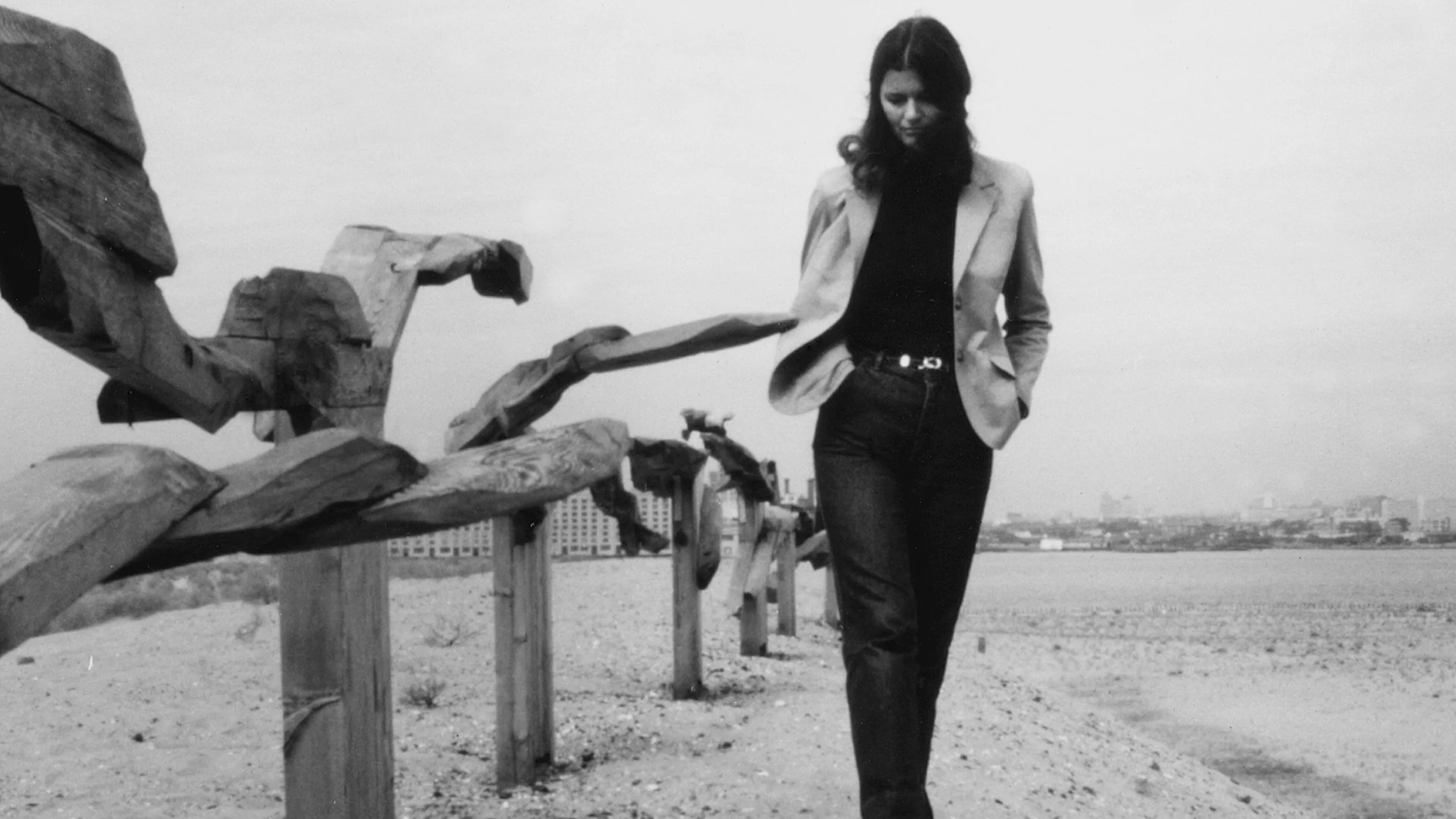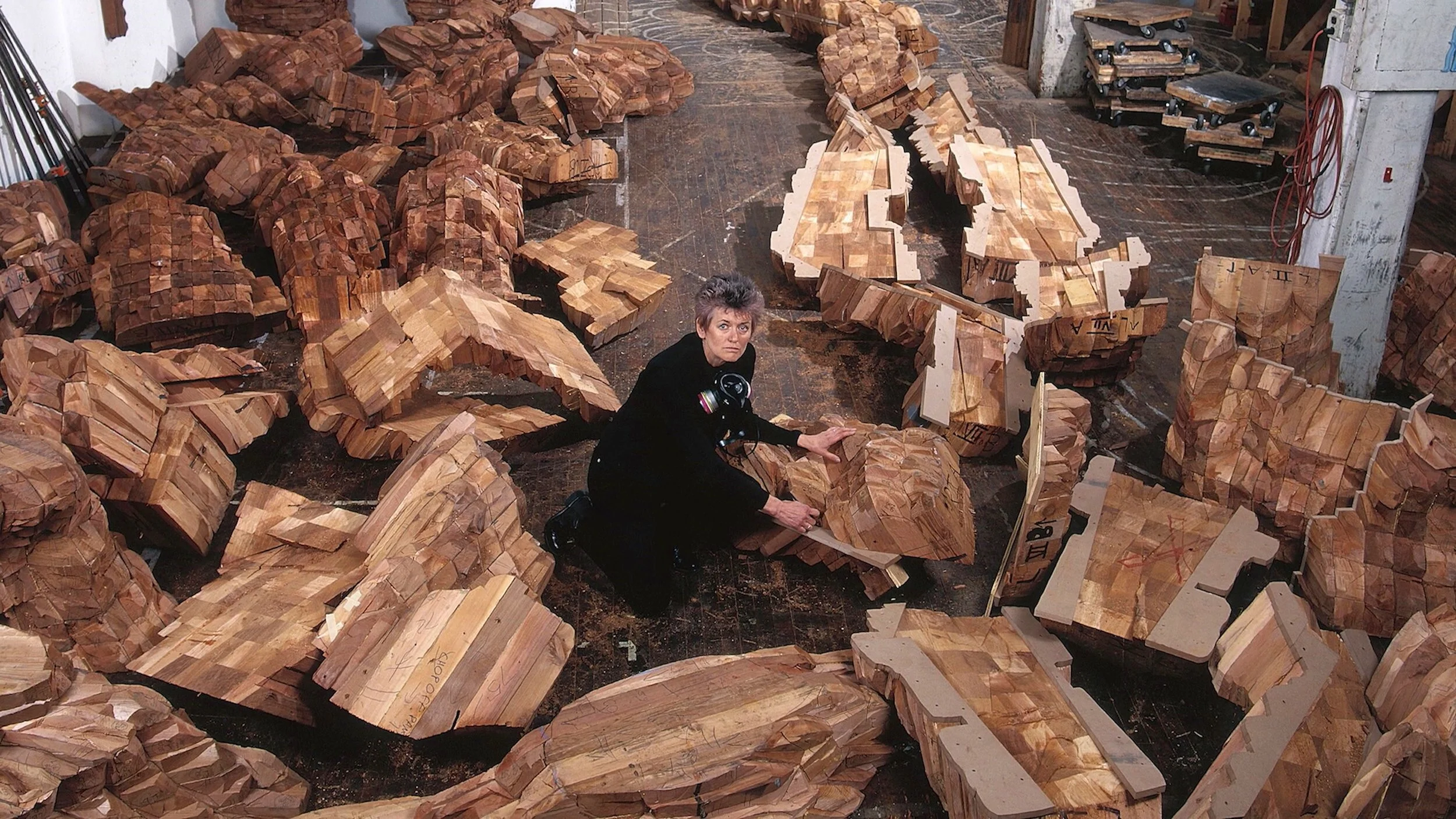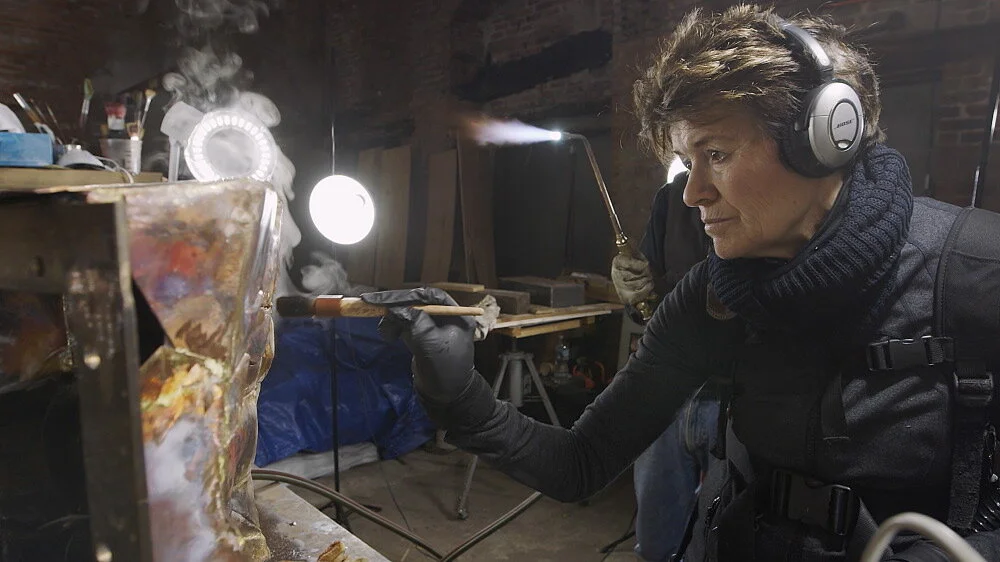Film Review: Ursula von Rydingsvard: Into Her Own
Von Rydingsvard walking beside her work Saint Martin's Dream in Battery Park, New York, 1980.
Full disclosure: I am mortified to admit that I was not fully aware of Ursula Von Rydingsvard or her body of work. So, for those unfamiliar with it, you are in for a revelation. For everyone else, it is probably the easiest way to see a lot of her work without having to travel all over the world, as all of her recent work is monumental and site specific. It can be found in major museum collections, including MOMA, Chicago Art Institute, Storm King, and in public spaces such as Barclay Center, M.I.T., Princeton and San Francisco.
Von Rydingsvard in her Williamsburg studio on South 5th Street, surrounded by the cedar cast of katul katul, 2002.
The opening scenes of Ursula suiting up in her protective gear, as if she is going to work in a radioactive factory are a little less shocking in this time of pandemic. It turns out that this lumber-filled space which looks a giant carpentry shop, is her studio. The material for the work is 4” x 4” cedar planks, which are jaggedly yet precisely cut into rough uneven shapes with chain saws, carefully assembled into amorphous shapes, glued, sanded and lastly, burnished and rubbed with graphite. The final creations are massive and imposing, primal and organic.
Von Rydingsvard working on the patina of Uroda, a monumental copper sculpture commissioned by Princeton University, 2015.
The contrast with her soft-spoken, calm demeanor as she describes the terrors of her young life, living in refugee camps, terrible mental and physical abuse from her father, her journey to becoming an artist is captivating. She credits her art as a product of all of that anger and pain, which saved her life. It makes sense. Seeing the work process involves aggressive actions on the materials, deconstructing them and re-composing them into new artfully-crafted forms, with exactingly-applied finishes. All of the attentions are so evident in the pieces. It is as if everyone who participated in creating them has left a bit of themselves in or on the work. I cannot explain it, but the pieces feel as if they have ancient souls. It conjures up the work of Andy Goldsworthy to me – with its obvious reference to nature. Her pieces depict permanence and natural decay.
Von Rydingsvard standing in front of Dumna in her studio in Bushwick, 2015.
Her story is an ode to perseverance in the face of absurd challenges. Besides being a penniless war refugee, a first marriage to a schizophrenic husband, raising a daughter on her own, teaching and working multiple jobs, all the while making art, is hard to fathom. Arriving in SoHo in 1975 at 33 years old was an awakening when she found a loft and began creating fascinating wooden pieces that look like primitive tools. She created a magical installation, St. Martin’s Dream, in 1980 in Battery Park. Her cedar pieces were widely commissioned. And then she was asked to do one in bronze which became Bronze Bowl with Lace. Watching the evolution of the work from wood to bronze is totally fascinating. All of it is majorly labor-intensive and she appears to be involved in every aspect. Her work has the presence of a Serra and she shares his sensibility toward surface. One could conclude that her work depicts the monumentality of the obstacles and lessons she has learned from life. Remarkably, at 77 years old, she seems to have no intention of slowing down. Film can be screened from filmforum.org.











